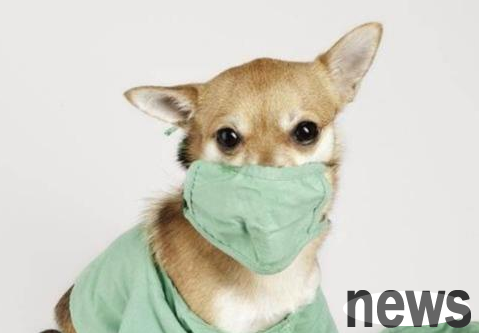"Cataract" refers to the turbidity of the lens or anterior lens capsule of the dog, which causes the visual acuity of the dog to be reduced or lost due to obstruction of the visual path. If a dog has cataracts, what are the symptoms of the...
"Cataract" refers to the turbidity of the lens or anterior lens capsule of the dog, which causes the visual acuity of the dog to be reduced or lost due to obstruction of the visual path. If a dog has cataracts, what are the symptoms of the dog, how to diagnose it, and how to treat it?

1. Causes of canine cataract:
1. Congenital cataract in canine: begins in the embryonic stage. Due to abnormal development of the lens and its capsule in the mother, it manifests as an inward move after birth.
2. Dog traumatic cataract: dystrophic damage to the lens and its lens capsule due to various mechanical injuries (such as corneal permeabilization).
3. Canine secondary cataract: secondary to other eye diseases and systemic diseases, such as irisitis, ophthalmitis, diabetes, etc.
4. Canine senile cataract: It is a degenerative change in the lens, mainly seen in elderly dogs aged 8-12.
2. Key points of diagnosis of dog cataracts:
1. Clinical symptoms
At present, the main basis for diagnosing dog cataracts in China is the clinical symptoms of the disease. When dogs experience symptoms of vision loss, such as staggering, often bumping into objects when walking in strange environments, invisible balls, strabismus, easily frightened, extremely sensitive to surrounding sounds, have a tendency to attack strangers, and turn a blind eye to danger, you can suspect that cataracts are present.
2. After using 10 g/L tropicamide for mydriasis, the assistant takes the affected dog into the dark room and performs Baoding, and then the veterinary slit lamp or ophthalmoscope for examination. If the laboratory does not have ophthalmic glasses and other equipment, a simple device can be formed with a small flashlight and a magnifying glass to check [5].
Check thoroughly according to the method, there are some shadows around the lens or posterior pole, and you can suspect it.
Slit lamp microscopy, the periphery of the lens or posterior pole is somewhat turbid, and the cortex is still transparent; or the water-scar-like changes appear in the posterior pole of the lens, it can be determined to be cataract.
3. Ultrasound examination
Using an ophthalmic ultrasound machine, various structures in the eye can be clearly distinguished, and the image is clear and the effect is very good. Generally, small ultrasound probes above 7.5 MHz are required to check cataracts. For large dogs, a 5 MHz probe is required to check the back structure of the eye. If you need to get clearer images, you need to use a higher frequency probe. When the dog suffers from eye pain or the animal is extremely uncooperative, sedation or local anesthesia, or even general anesthesia is required. The normal dog's lens has only obvious echoes in the anterior and posterior capsules of the lens on the B-ultrasound. When there is obvious weak or strong echoes in the peripheral part of the lens, it can be judged that the dog has cataracts.

III. Treatment of canine cataracts
Canine cataracts are diseases that can be cured without any medicine. The color of the crystal changes are like a boiled egg, from egg white to protein. To restore vision, the turbid lens can only be removed through surgical removal.
Before surgery, any rapid cataract will cause eye irritation. Uveitis (inflammation inside the eyes) usually occurs due to abnormal crystals. Whether or not you have cataract surgery, uveitis needs timely treatment, otherwise it will also cause other eye problems.
The surgery for cataracts in dogs is the same as that for cataracts in humans. We call phacoemulsification surgery. During the operation, we will first dilate our pupils, and then open a small opening on the edge of the cornea. In the eyes, the crystals are actually in a pocket, which we call the crystal capsule. We tear a small hole in the capsule, and we put the ultrasound probe in and break the crystal, but we cannot break the capsule. When the crystal is sucked out, we will place an intraocular lens. The intraocular lens has two loops that can be supported in the capsule. Finally, the incision of the cornea is sutured.
4. Postoperative care methods for dog cataracts
Postoperative care for dog cataracts is very important. If postoperative care is ignored, it may have adverse effects on the originally successful surgery. Therefore, at this stage, the owner must take good care of the sick dog to avoid overexcitation. It is important to regularly put eye drops on the dog, wear Elizabeth's rings, and regularly reviews.
Drug treatment: Use steroid anti-inflammatory drugs to accelerate the healing of wound sutures, but when corneal ulcers occur, steroid drugs should be stopped immediately until the ulcers are healed before continuing; broad-spectrum antibiotics should be used after the operation to prevent bacterial infection; local mydriatic drugs (such as atropine and tropicamide) should be used to treat uveitis after the operation, accelerate the outflow of aquacula and reduce eye swelling.